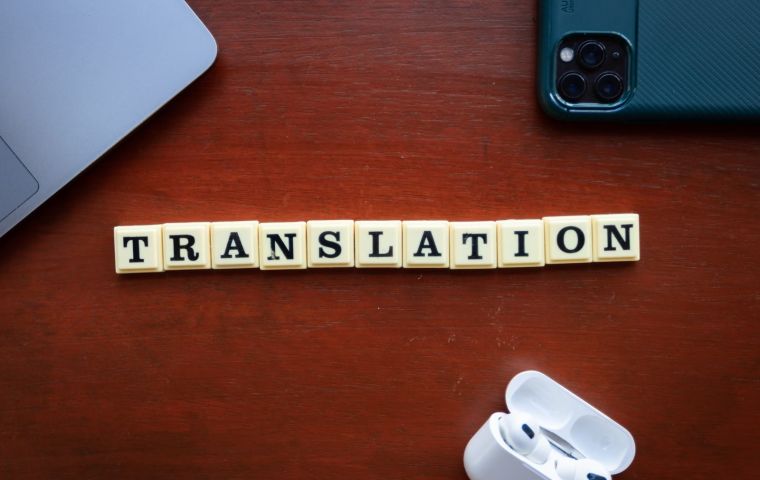MercoPress. South Atlantic News Agency
The Business of AI Translation Tools in Cross-Border Trade
 Photo: Unsplash
Photo: Unsplash In the last few years, AI translation tools have moved from experimental curiosities to core infrastructure for companies that trade across borders. For markets that span Spanish and Portuguese speakers, the shift is especially meaningful. All invoices and international business negotiations rely on language as their fundamental connection.
Companies have used professional translators together with bilingual staff to handle communication gaps for numerous decades. The existing method delivered results yet it operated at a slow pace on top of expensive costs.
AI translation tools now transform business operations through their ability to handle massive multilingual content quickly while maintaining higher accuracy levels than what was possible just three years ago.
It is a bit like the way online casinos attract new players with free spins. The offer lowers the initial risk and encourages people to try the platform, discovering its features without a major investment. In the same way, AI translation tools are making it easier for companies to explore new markets by removing much of the initial cost and complexity of multilingual communication.
English-Chinese translations have the greatest impact among all translation operations. English functions as the international commercial language yet Chinese represents the biggest consumer market and manufacturing center for numerous products. The English–Chinese connection serves as the main economic transformation in South America and Mercosur forces when businesses need to expand their negotiations or market presence.
English–Chinese translation: Speed meets strategic importance
The pace at which communication occurs determines whether Chinese or Chinese imports and exports result in successful business agreements. Translation tools like DeepL, and Tencent’s iFlytek have become standard features within email platforms and video conferencing software or even document workflows. A technical English document can convert into Chinese in minutes by preserving specialized terminology thanks to a developed and customized glossary library.
The manufacturing sector is a prime example. A U.S. electronics company doing business with Shenzhen factory workers can transmit design changes in English through the night to receive a clear Chinese version before morning in China. Manufacturers can modify production schedules and ask questions without needing costly live interpreters to manage every exchange.
AI tools now function alongside human translators during important business negotiations. Through Zoom platforms users gain access to live transcription alongside real-time translation overlays which enable Chinese suppliers to talk with American retailers without waiting for lengthy interpretation periods. The system functions as a replacement for expert interpreters during final contract signings but helps simplify all previous communication exchanges before a deal is complete.
Ecommerce also benefits massively. Alibaba together with JD.com implement AI translation for international product listings and Amazon and Shopify merchants can modify their product descriptions for Chinese market platforms through quick adaptations. The process of market entry becomes faster while online shopping becomes smoother for customers.
AI translation in multi-language trade: The English hub
The status of English as the global trade hub allows it to connect different languages that do not share a common language. Spanish exporters conducting business with Japanese clients will usually begin by converting their content from Spanish to English then translate it into Japanese. The two-step translation process becomes speedier and produces better results through AI tools especially when these translations use specialized industry dictionaries.
Financial services operate as a notable demonstration of this central language model. A Singapore-based investment firm uses English as an intermediary language to review legal documents received from Brazilian partners since their internal legal team works best in English.
The growing Chinese influence on African, Southeast Asian and Latin American markets through trade initiatives and infrastructure projects makes Chinese language translation essential. Deals often use English as their primary language but require exact Chinese translations for operational implementation. The combination of AI tools helps to process extensive contracts along with compliance forms and technical manuals which prevents human translator overload.
Risks, safeguards and the road ahead
AI translation demonstrates remarkable progress but requires human supervision particularly when dealing with legal and financial matters. A mistranslation of a shipping clause or a customs requirement can cause delays, penalties or even legal disputes. The difference between simple and traditional Chinese language demands precise handling from AI systems because incorrect translations might cause brand misunderstanding and compliance violations.
The upcoming years will bring greater unification between AI systems. Customs paperwork could be automatically translated and validated against both English and Chinese regulatory databases before shipment, reducing delays. Negotiation transcripts could be archived in multiple languages for compliance and training purposes. Marketing campaigns could be tested in parallel across continents, with AI handling the linguistic adaptation and local teams refining cultural fit.
The rapid nature of international trade relies heavily on English and Chinese languages as its primary communication foundation. AI translation tools enhance human expertise by changing the points of application during translation processes. The winning businesses will be those that build translation as a continuous operational capability throughout all their international operational stages.




Top Comments
Disclaimer & comment rulesCommenting for this story is now closed.
If you have a Facebook account, become a fan and comment on our Facebook Page!